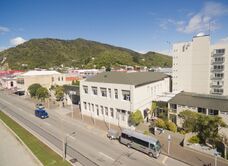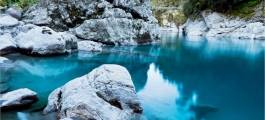Appreciate the fascinating history of the west coast hear about the ship wrecks, gold miners and pounamu hunters during your Historic Hokitika holiday. Hokitika was first settled in 1860 when the town was a centre of goldmining. Hokitika was an important river port destination, but many ships came to grief on the notorious ‘Hokitika Bar’ – a sandbar that shifts with every tide. There are some lovely old buildings on the town’s historic walk. You’ll also notice galleries specialising in pounamu jewellery and art works.
The Arahura River, which enters the sea just north of Hokitika, is a traditional source of pounamu (greenstone). Gold jewellers, wood turners and potters provide other souvenir opportunities. Hokitika’s icon event is the Wildfoods Festival, which is held at the end of summer. Virtually all of New Zealand’s jade (greenstone) is quarried within a 20km radius of Hokitika and as a result jade stores as well as gold, glass and wood craft stores fill the city’s quiet streets. Tourist buses passing through Hokitika usually stop only as long as it takes to ring up the orders. Those who stay longer in Hokitika have the opportunity to watch artisans at work, carve their own bone or greenstone piece, or simply meander along the beach to enjoy a magnificent sunset over the Tasman Sea. Hokitika’s busiest day of the year features the extremely popular Wildfoods Festival, held the second weekend in March. Hokitika is a long way to the next place of any size, and its proximity to the beach and good bushwalks, and a couple of quality restaurants, give it the edge; above all, it is known these days for its festivals, which make the place far livelier than you might initially expect. Lake Mahinapua, south of town, is a popular spot for yachting, fishing and canoeing, and nearby you can enjoy a round of golf at the 18-hole Hokitika Golf Links. Hokitika's historic paddleboat Takutai Belle cruises down the river or take to the skies for a scenic flight over towering Mount Cook and the mighty Franz Josef and Fox glaciers.







































